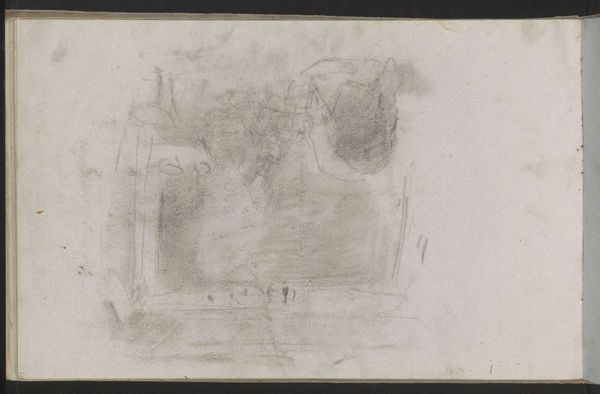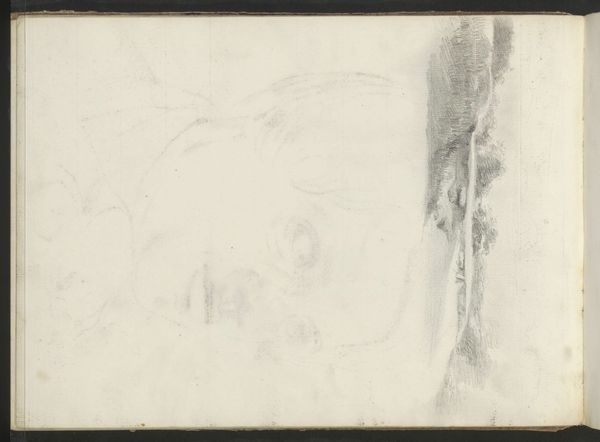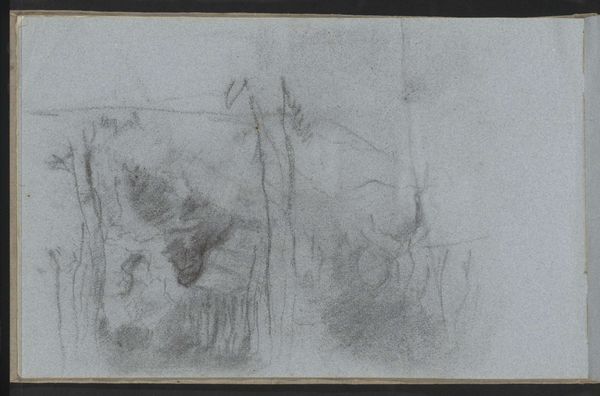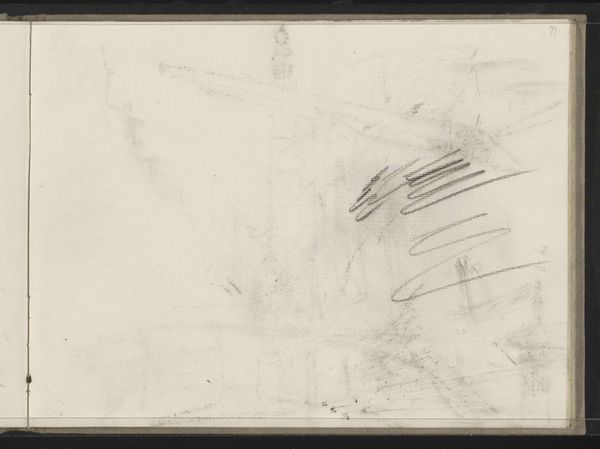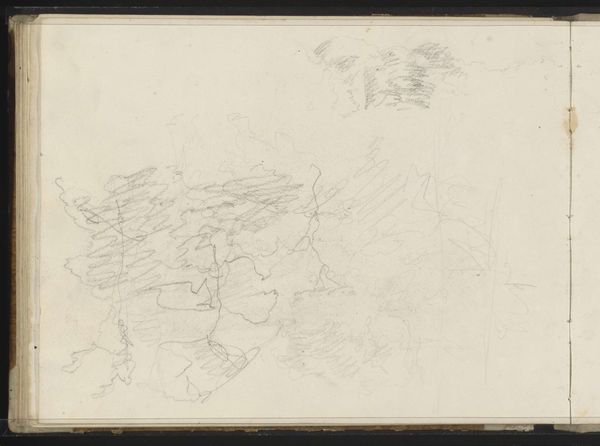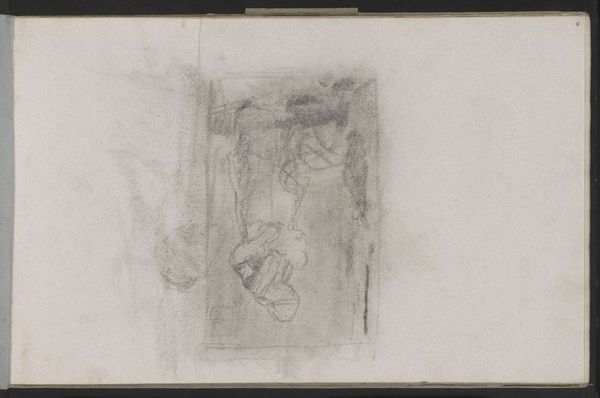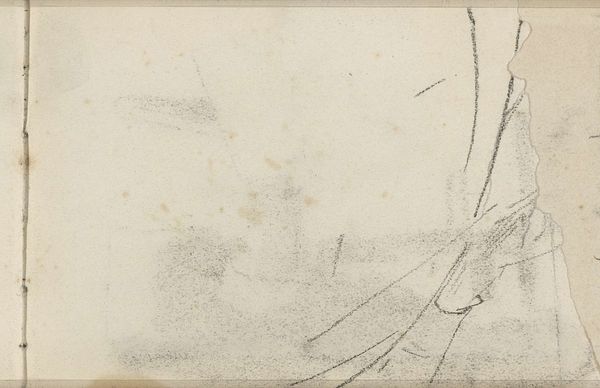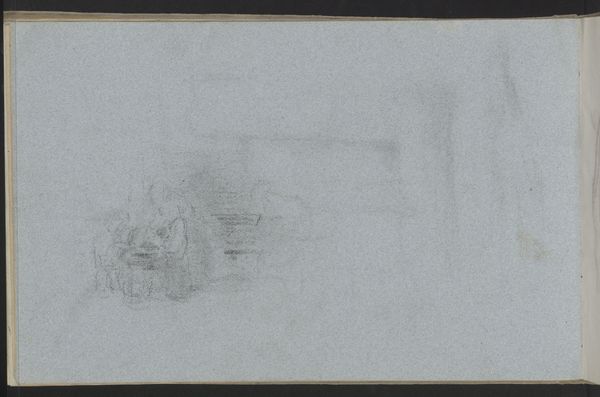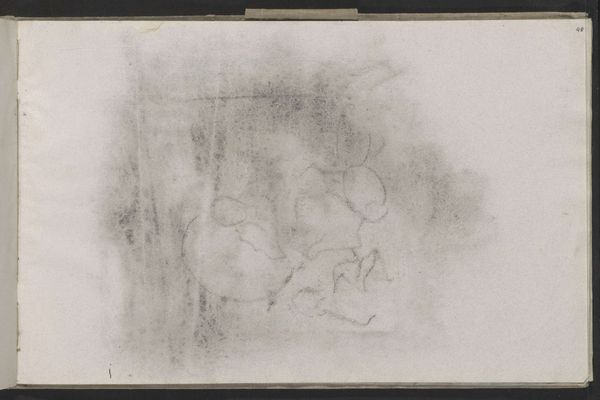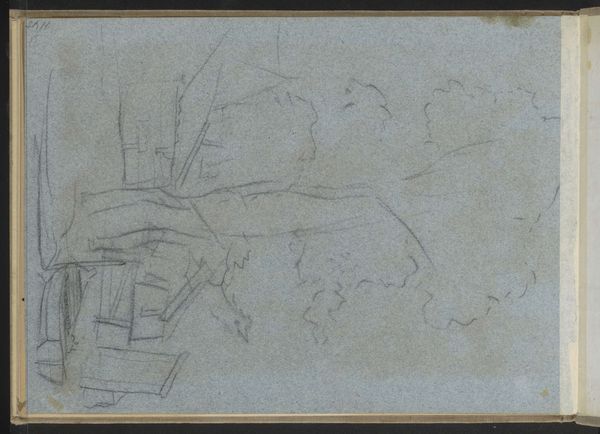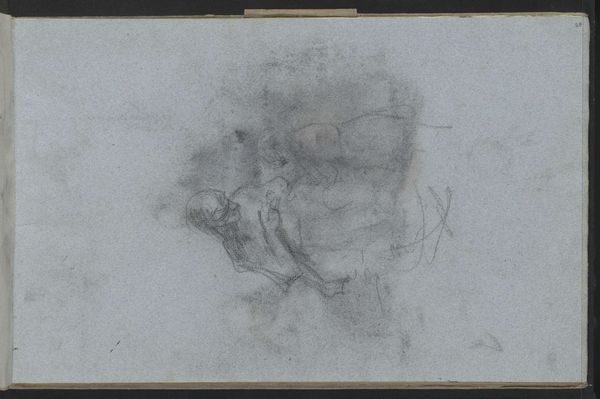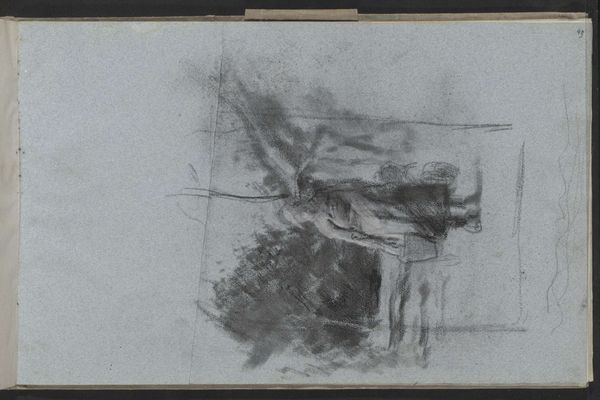
drawing, pencil
#
pencil drawn
#
drawing
#
amateur sketch
#
toned paper
#
light pencil work
#
impressionism
#
pencil sketch
#
incomplete sketchy
#
landscape
#
personal sketchbook
#
detailed observational sketch
#
pencil
#
sketchbook drawing
#
sketchbook art
#
realism
Copyright: Rijks Museum: Open Domain
Editor: We're looking at "Dorpsstraat," or "Village Street," by Albert Neuhuys. It's a pencil drawing, dating somewhere between 1854 and 1914 and currently held in the Rijksmuseum. It's a quick sketch, very light, and feels more like a preliminary study. What do you see in this piece in terms of its historical context? Curator: This sketch offers a fascinating glimpse into the art world's move toward representing everyday life. Neuhuys, working during a time of significant social and political change, presents us with a seemingly simple village scene. But it's the *choice* of this subject matter, rendered in such an unrefined style, that speaks volumes about the changing role of art. Editor: Unrefined? I suppose compared to history paintings... yes. How so? Curator: Exactly. Think about the dominant artistic trends of the era. Grand, historical narratives were still valued, especially those displayed in museums. Yet here, we have a humble street, almost anonymously rendered. The artist seems more interested in capturing the fleeting impression of the scene rather than making a grand statement. This shift reflects a growing interest in realism, in depicting the lives and environments of ordinary people. It invites a different kind of audience and fulfills a different social purpose. This isn’t a painting made to inspire grand patriotism or moral instruction; it depicts the world for world's sake. Editor: So, it's almost like Neuhuys is democratizing art through his choice of subject matter and his sketching style? Curator: Precisely! Art became about observation, accessible to a wider audience and reflecting a new cultural value placed on ordinary existence. Is that reflected at all in what is currently showing in Museums? Editor: That makes perfect sense, I never thought about sketching in such a way! Now, I’m starting to question whether so-called "unfinished" work is ever truly incomplete! Curator: It encourages you to question established notions of "finish" and purpose. Which can be more political than any grand history painting.
Comments
No comments
Be the first to comment and join the conversation on the ultimate creative platform.
